All too soon it was time to say goodbye to Sucre. Maaike had put the fear of God into me about the buses in Bolivia, however, it turned out to be the nicest bus that we’d had the entire trip. There was a small blip (quite normal) before getting the bus, there was a protest on, so we had to get a minibus from the bus station to the actual bus. So our real bus stopped outside of town and we just connected in with it.
Nice seats though, here Maaike is showing off what “Full Cama” looks like. It really was a comfortable way to travel, and even I slept a bit ;)
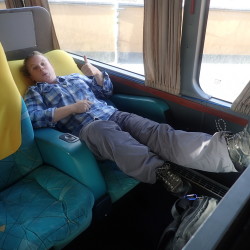
The hostel we were staying at “Arthys” was just around the corner from the bus station, which was handy. Again, was very very thankful to our friend Alex whom we met on the boat to Antarctica with the suggestion of the OSMAnd+ app. So many people had little printed out pictures of Google Maps.. (even though you can get offline versions). Anyway, love OSM.
First impressions of La Paz. Lots and lots of cars and a reasonable amount of associated pollution, that said, it has a nice feel to it. We took in a quick trip to the Museo de la coca.

It was a very interesting museum which I would recommend. Chewing Coca leaves happens throughout at least Bolivia and Peru at altitude. It does seem to help with the symptoms, and is a mild stimulant. There seems to be lots of (mis)information on the Internet (who’d have thought?!) but it seems the alkaloids (incl cocaine) are released when chewing. That said, it’s in relatively small doses and apparently not addictive. Certainly in a lot of the hostels you visit there are coca-leaves available for making tea with, and, like I said, it does help with the altitude.
The miners use coca religiously and, back in the day, it was more expensive than gold. Interestingly, the Spanish banned coca to begin with, then realised that their workers became a lot less efficient / able to work the ridiculously long hours, and so reinstated the use of coca and … taxed & regulated it.
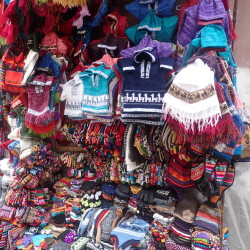
Finally finally both our stomachs were feeling well enough to have my birthday dinner. Only 3 months late. We went to “the stakehouse” and were absolutely full to the brim by the end of it. Then went to the cinema to see the latest in the Divergence series. I quite enjoyed the film, so I was sorry to see it has received bad reviews and that the budget is likely slashed. Hey ho.

We also took a few rides on the cable cars. La Paz itself is pretty much in a valley floor, and up above is the town of El Alto, where I believe the airport is. It’s quite a hike from top to bottom, so they’ve put in 2 cable cars at the moment, with more to come. It costs about $.75NZD to take a trip, well worth it even if you’re simply going along for the views.



One day we did the “Red cap” walking tour. Well well worth it. Our guides were excellent and had so many interesting little stories to tell. For example, here’s a picture of the San Pedro Prison roof.

Now, I’d not actually heard of San Pedro, or at least, not to remember, but they used to do tours of the prison. Tours, operated by the inmates, because, inside the prison it was entirely run by them!. Tours have been discontinued by the way. I don’t think I’d be running off to put myself at the mercy of the inmates I must admit.
Anyway, the roof as you’ll see has holes in it. According to our guides, cocaine is produced inside the prison, and, every so often a package is lobbed out of a hole in the roof to an accomplice waiting outside the walls. Why, you might ask, do the police not stop it. Kickbacks apparently.
They took us for a wander through the markets. Here you can see potatoes! I think they said there were something like 400 or 500 different varieties in Bolivia.



Above you can see a lady in the witches market, reading the coca leaves, and some dead llamas. They had, as you can imagine, a few stories about the witches market. The potions they sell were pretty potent. In fact, quite a few people died while visiting some of the local pleasure houses. When the authorities investigated, it seemed a few of the suitors had taken love potions, which turned out to be….. wait for it….. horse-viagra!! and their poor hearts just gave out. Hey ho. You could get “dust” too, for attracting a mate, repelling a mate, etc. I think our guide was suggesting you might not want to travel with said dust, suggesting it might have been cocaine, or cocaine mixed with something.
Going back to the dead llamas, apparently it is good luck when you’re constructing a building, to bury a llama (or something) with a blessing etc. They told this “story” that for bigger buildings they would take homeless off the streets, get them drunk, and then kill them and bury them as a sacrifice. Seems quite apocryphal, but our guides seemed to suggest that there were lots of these stories, so maybe a grain of truth. That, and that when some buildings are knocked down, they find human remains. Who knows, it was a good story anyway.
They also took us to the San Francisco cathedral. They pointed out some of the incorporations of local to Christian symbols. For example, here you can see one of the figures eating coca leaves! There’s also pacha-mama, a mother-earth deity?! incorporated?! Well, she’s certainly there, but I guess I find it surprising that it’s on a church. Also, a lot of the figures of Christ / Mary feature feathers in their halos / headdress, again, a very Incan feature. Separately, Maaike and I went into the attached museum. They allow you up on the roof and into the bell tower, which is always fun. You can also see a blue statue of Christ. Nothing actually special about this, except that some painters were told to paint a wall blue, and they painted everything blue. Sounds like some of the paint jobs in Christchurch after the earthquake (I kid you not)

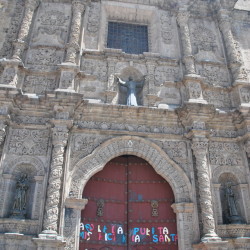




Finally on the tour we went to the main presidential square. See if you can see anything odd in the first picture below here (you may need to zoom in)

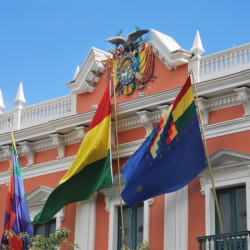


You can still see bullet holes in the buildings (left as a reminder). I’d definitely recommend the walking tour, a definite highlight of our time in La Paz.
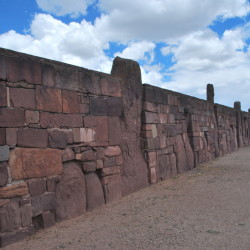











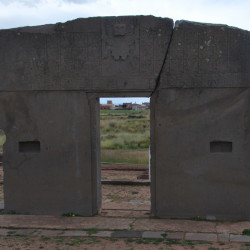



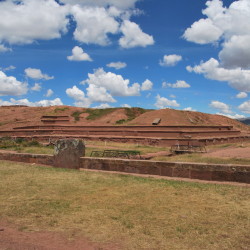







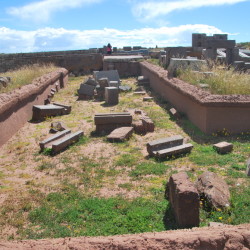





















Recent Comments